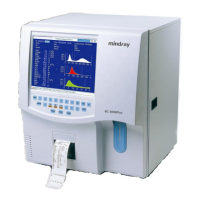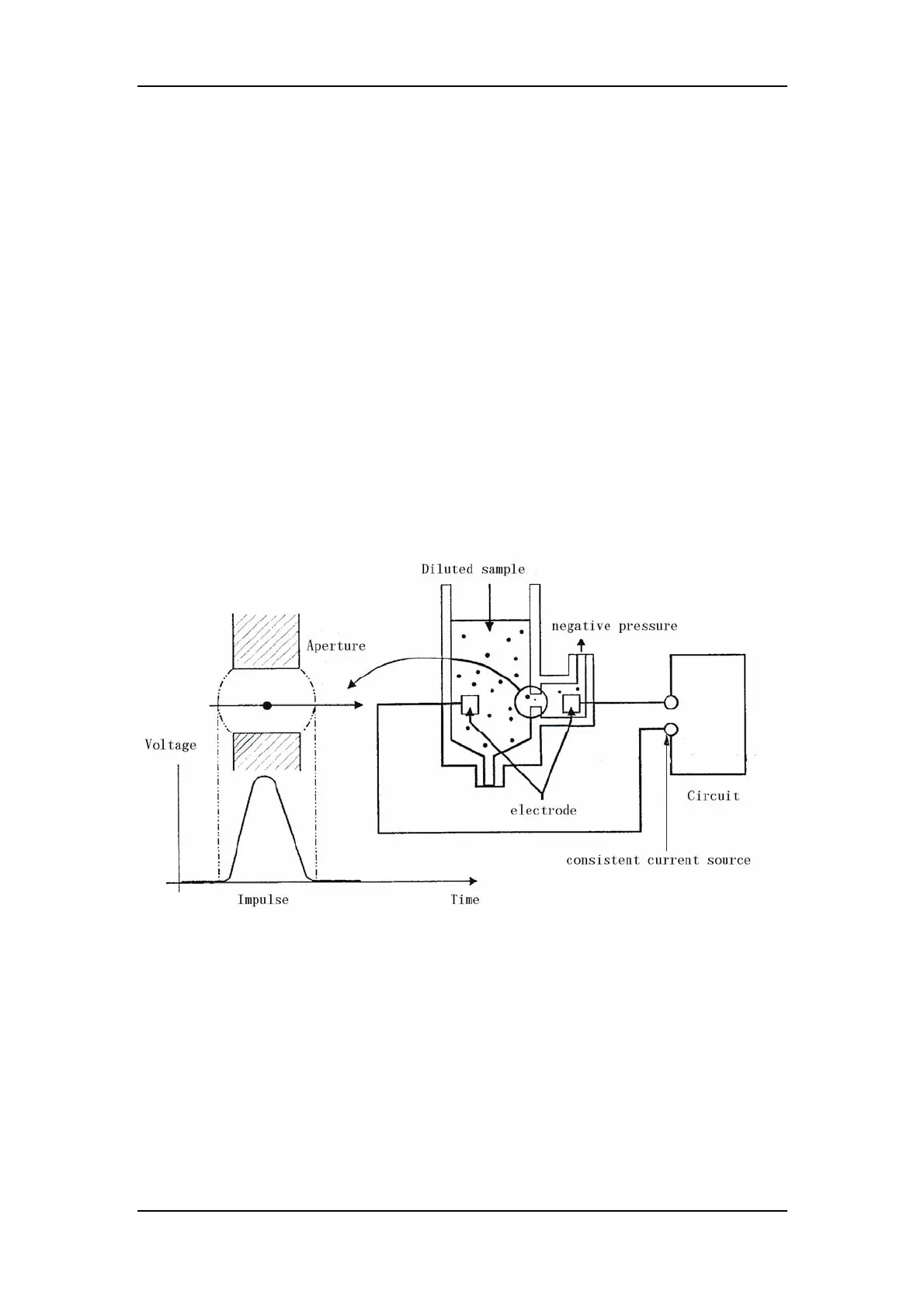Understanding the System Principles
3-6
3.4.2 Measurement Principles
WBC measurement
WBCs are counted and sized by the Coulter method. This method is based on the
measurement of changes in electrical resistance produced by a particle, which in this case is
a blood cell, suspended in a conductive diluent as it passes through an aperture of known
dimensions. An electrode is submerged in the liquid on both sides of the aperture to create an
electrical pathway. As each particle passes through the aperture, a transitory change in the
resistance between the electrodes is produced. This change produces a measurable
electrical pulse. The number of pulses generated signals the number of particles that passed
through the aperture. The amplitude of each pulse is proportional to the volume of each
particle. Each pulse is amplified and compared to the internal reference voltage channels,
which only accepts the pulses of a certain amplitude. If the pulse generated is above the
WBC threshold, it is counted as a WBC.
Figure3-4
HGB measurement
HGB is determined by the colorimetric method. The WBC/HGB dilution is delivered to the
WBC bath where it is bubble mixed with a certain amount of lyse, which converts hemoglobin
to a hemoglobin complex that is measurable at 525 nm. An LED is mounted on one side of
the bath and emits a beam of light, which passes through the sample and a 525nm filter, and
then is measured by a photo-sensor that is mounted on the opposite side. The signal is then
amplified and the voltage is measured and compared to the blank reference reading

